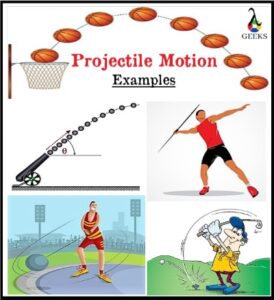The article discusses about is horizontal velocity constant or why horizontal velocity constant in projectile motion, along with its problem examples.
After the applied force sets the parabolic path in projectile motion, only the gravity force acts downward to a projectile in the vertical direction. So an object moves downward with varying vertical velocity but constant horizontal velocity.
Read more about Gravity Force.
An object is said to be projectile when there is only one gravity force acting upon it. When an object is fallen from a height, thrown vertically upward, or thrown at an angle horizontally, it travels in a predictable curved path when no force other than gravity is acting. When an object is in motion by its inertia and is impacted by gravity force, it is called ‘projectile motion’. If any other force is acting on an object, then it is not said to be a projectile.
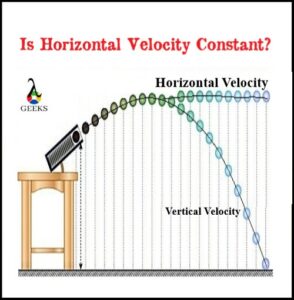
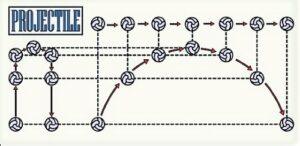
(credit: shutterstock)
Most of the time, we misunderstand that when an object moves upward or downward, there must be a force also acting upward or downward. Note that the force only needed to set up an object’s acceleration, not its motion. The force is not maintaining an object’s motion but its acceleration. Therefore, even if the projectile is driving upward, there must be a downward acceleration due to gravity, slowing down the projectile motion.
That’s why the projectile only experiences a single force straight down; not backward or forward or, precisely speaking as horizontally. The gravity force only accelerates up-down or vertical velocity, whereas its horizontal component does not change as no force acts horizontally in projectile motion.
There are various examples of projectile motion that portrays such parabolic trajectory with constant horizontal velocity, such as
- Playing Golf
- Throwing Basketball in Basket
- Cannonball Motion
- Water escaping a Hosepipe
- Football after Kicking
- Mountain Bike Stunt
- Hammer Throw
- Rocket Projection
- Volleyball
- Javelin Throw
When is Horizontal Velocity Constant?
The horizontal velocity during projectile motion is constant.
As per definition, the projectile motion concerns a single gravity force that provokes a net force toward the earth’s center. Since no horizontal force acts in projectile motion, its horizontal velocity stays constant and progresses towards the earth’s center due to gravity force.
Read more about Gravitational Acceleration.
To understand the concept of downward acceleration with constant horizontal velocity, consider an example of a boy throwing a ball in a straight direction with high velocity. Let’s say the gravity is negligible in this case, then how does the ball move in the absence of gravity?
Newton’s law says, “an object in motion continues to move in motion unless some force acts on it“. That means; a ball moves in a straight path with a constant velocity, which agrees with the law of inertia.

(credit: shutterstock)
Now in the same case, what if gravity exists? The gravity force influences the ball’s vertical motion, causing a vertical acceleration, agreeing with the free-falling object accelerating at a rate of acceleration due to gravity g. Because of gravity force, the ball will drop vertically below its straight path after parabolic trajectory as per the attribute of the projectile motion.
Suppose that boy applies a force of 20N to throw the ball. The ball achieves a velocity of 10m/s and persists in moving with the same velocity horizontally. At the same time, the vertical velocity achieves the velocity at 9.8m/s each second due to gravity force. That means the ball has a vertical acceleration of about 9.8 m/s but no horizontal acceleration.
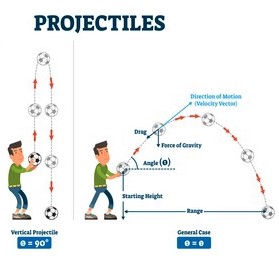
(credit: shutterstock)
The downward acceleration results in a lowered trajectory from the straight line the projectile ball travels if the gravity force is negligible. The ball possesses its constant horizontal velocity in the existence of gravity which acts to drive the exact vertical velocity as before.
However, the gravity or the vertical force works perpendicular to the horizontal velocity of the projectile. Since the perpendicular components are independent of each other, the gravity force cannot impact the ball’s horizontal velocity. That’s why any projectile moves with downward acceleration but constant horizontal velocity.
Read more about Gravitational Acceleration Examples.
Why is Horizontal Velocity Constant?
The horizontal velocity of the projectile is constant because of its inertia.
If there is no force, an object’s state will not modify as per the law of inertia. A projectile’s tendency to remain in a motion with constant velocity resulted in the horizontal motion of the projectile. Therefore, the projectile drives with a stable horizontal velocity.
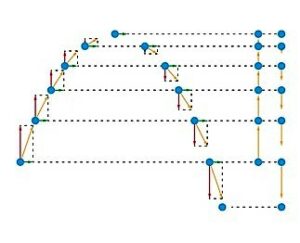
Force is needed to transform an object state, either to get it in motion from stationary or to be stationary from motion. But if there is no external force acting, an object stays at rest, or if it is in motion, it persists in traveling forever with constant velocity. The projectile is provided the initial velocity by applying force, and then it is only influenced by the inertia and gravity force.
The gravity force acted vertically downward to the projectile that varied the vertical velocity each second. But there is no force functioning horizontally on the projectile; it travels with constant horizontal velocity due to its inertia property. The downward vertical motion and constant horizontal motion offer the projectile a parabolic trajectory.
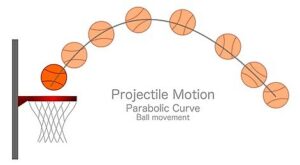
(credit: shutterstock)
Consider an archer launching the arrow at an initial velocity of 15m/s with no upward angle. If the gravity is negligible, the projectile arrow would be persisting in motion at 15m/s in the horizontal direction. But the gravity force pushes the arrow to accelerate downward with a velocity of 9.8m/s/s.
But the essential thing to cite is that the horizontal velocity stays invariant during the arrow’s parabolic trajectory, which approves that there is only a vertical force employed upon the projectile arrow but no horizontal force.
Suppose the archer launched the arrow with a velocity of 75m/s at an angle of 10 degrees above the horizontal. For such initial velocity, the arrow would initially travel at 19.6m/s upward and 73.1m/s rightward. Furthermore, the arrow travels rightward with the exact horizontal velocity of 73.1m/s while the vertical velocity of the arrow changes by 9.8m/s each second.
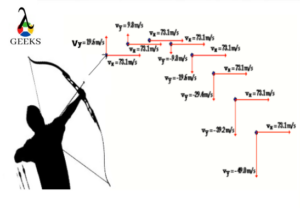
As the arrow advances towards its peak after being launched, it slows down; and as it drops from the peak, it speeds up. We can observe the balanced nature of the arrow or projectile motion. After one second of reaching its peak, the vertical velocity equals the velocity after one second lowering from its peak. Likewise, after two seconds of reaching its peak, the vertical velocity is equal to the vertical velocity after two seconds lowering from its peak.
For non-horizontally projectiles, the velocity vector’s direction is assumed as a plus (+) on the path up and minus (-) on the path down. Still, its magnitude is similar to the identical interval time on each side of its peak. Also, notice that the vertical velocity of the arrow is zero at its peak. It is because the velocity vector of the arrow is totally horizontal at the peak in the trajectory. Therefore, for short displacement, the horizontal motion is unaffected by the gravity force.
Also Read:
- How can you find acceleration from a velocity time graph
- How to measure velocity in astrophysics
- Negative relative velocity
- How to compute velocity in neutron stars
- How to find constant acceleration with velocity and time
- How to calculate group velocity in wave mechanics
- Instantaneous velocity vs average velocity
- How to find horizontal velocity without time
- Terminal velocity formula
- Relative velocity after collision

Hello, I’m Manish Naik completed my MSc Physics with Solid-State Electronics as a specialization. I have three years of experience in Article Writing on Physics subject. Writing, which aimed to provide accurate information to all readers, from beginners and experts.
In my leisure time, I love to spend my time in nature or visiting historical places.
Looking forward to connecting you through LinkedIn –
